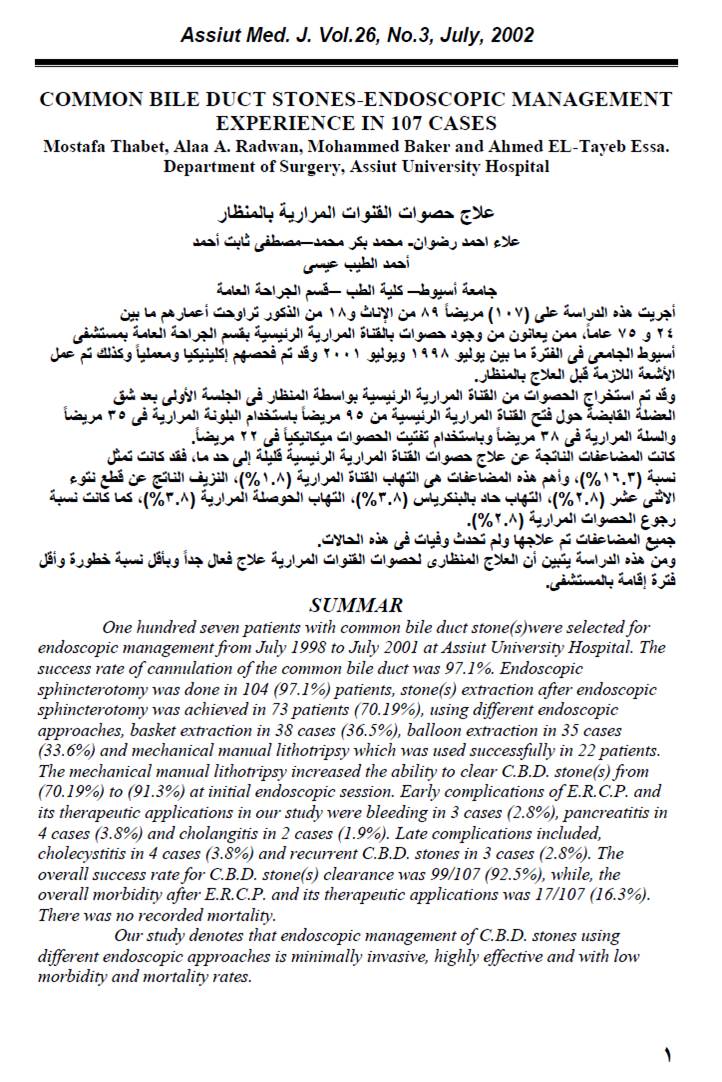Abstract
One hundred seven patients with common bile duct stone(s)were selected for endoscopic management from July 1998 to July 2001 at Assiut University Hospital. The success rate of cannulation of the common bile duct was 97.1%. Endoscopic sphincterotomy was done in 104 (97.1%) patients, stone(s) extraction after endoscopic sphincterotomy was achieved in 73 patients (70.19%), using different endoscopic approaches, basket extraction in 38 cases (36.5%), balloon extraction in 35 cases (33.6%) and mechanical manual lithotripsy which was used successfully in 22 patients. The mechanical manual lithotripsy increased the ability to clear C.B.D. stone(s) from (70.19%) to (91.3%) at initial endoscopic session. Early complications of E.R.C.P. and its therapeutic applications in our study were bleeding in 3 cases (2.8%), pancreatitis in 4 cases (3.8%) and cholangitis in 2 cases (1.9%). Late complications included, cholecystitis in 4 cases (3.8%) and recurrent C.B.D. stones in 3 cases (2.8%). The overall success rate for C.B.D. stone(s) clearance was 99/107 (92.5%), while, the overall morbidity after E.R.C.P. and its therapeutic applications was 17/107 (16.3%). There was no recorded mortality.
Our study denotes that endoscopic management of C.B.D. stones using different endoscopic approaches is minimally invasive, highly effective and with low morbidity and mortality rates.


